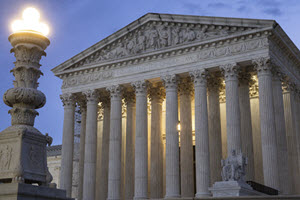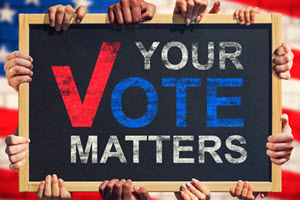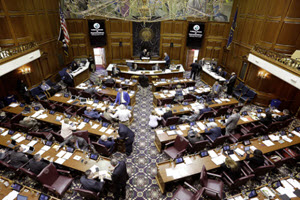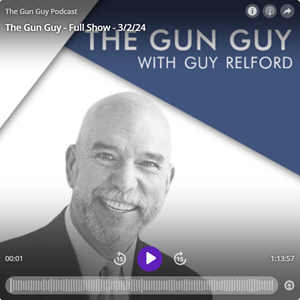
The 2028 election is now in the rearview mirror. As gun owners and supporters of the 2nd Amendment, we have to look at this in a very positive light. This election had 61% of Hoosier registered voters cast a ballot, with 54% voting absentee (includes both traditional mail-in and in-person early voting) according to Indianavoters.in.gov. Many people waiting a long time to vote, but were bound and determined to make their vote count.
While I have no numbers to back this up, I have no doubt America’s gun owners turned out in great numbers. For the first time the National Rifle Association Institute for Legislative Action (NRA-ILA) targeted voters in battleground States with peer-to-peer texting. President Trump as well as Senate, House, and State-level 2A supporting candidates who received NRA Political Victory Fund (PVF) endorsements were promoted with text messages. This was in conjunction with door knocking in specific areas of battleground States. President Trump took all seven battleground States and the NRA-ILA was active in all of those States, plus many more.
At the national level, President Trump took both the Electoral College and the popular vote (the first Republican to take the popular vote in 20 years.) With 312 Electoral College electors, that is the most received by a Republican candidate in 36 years. With that said, get ready for the 2028 election to crank up before we know it.
The Republicans also took back the Senate and held the House. The Senate is particularly important for the “advice and consent” for cabinet positions, federal judges, and Supreme Court Justices. Elections do have consequences.
At the federal level here in Indiana, honestly I don’t know if we made progress or not. We have two Republican Senators (one is endorsed by the NRA-PVF) and we still have 7 out of the 9 US House Representatives with an “R” behind their name. The difference is, we went from having seven endorsed by NRA-PVF, to six. The 6th Congressional District had not one, but two candidates with an “F” grade from the NRA-PVF. I may have mentioned this before, but elections do have consequences. On the positive side, newcomers to the US House in the 3rd District (Marlon Stutzman) and in the 8th District (Mark Messmer) bring an A-rating from their previous voting history.
At the State level, Mike Braun went from being an NRA-PVF “A” grade US Senator, to an NRA-PVF “A” grade Governor. Attorney General Todd Rokita was re-elected and also has an NRA-PVF “A” grade. Members of Attorney General Rokita’s staff have testified in support of pro 2nd Amendment bills at the Indiana Statehouse many times.
At the Indiana Statehouse: the Republicans maintain super-majorities in both the Senate and the House. (The term “super majority” is a bit misleading at the State level since overriding a veto from the Governor only requires a simple majority, not the 2/3 majority required at the federal level.) By my count the House is 70-30 Republican, the Senate is a 40-10 majority. With that said, there have been many Pro-2nd Amendment bills that were a serious fight to get passed. As gun owners, we have to remind our elected officials we are out here, and we are paying attention.
Finally, I’d like to thank all of you who stepped up in the most important election of our lifetimes (for now.) We definitely put one in the win column in 2024.
Coming up next: a review of 2024. The Indiana Statehouse, Supreme Court decisions, maybe a bit more on the 2024 general election, and possibly a preview of what to expect from the 2025 Indiana General Assembly session.
Kelly Myers, ISRPA Government Affairs Co-Director





